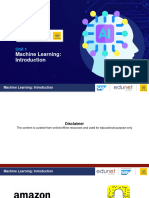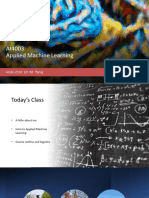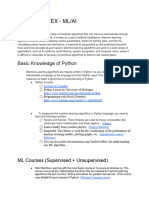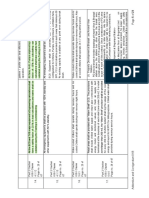0% found this document useful (0 votes)
21 views45 pagesMachine Learning Notes22
The course on Applied Machine Learning, led by Richard Johansson, covers various machine learning models, their implementation, and practical applications, emphasizing real-world contexts and ethical considerations. Students will engage in interactive lectures, complete five compulsory programming assignments using Python, and participate in a take-home exam. The course also includes resources such as literature, exercise sheets, and online quizzes to support learning.
Uploaded by
hewan bekeleCopyright
© © All Rights Reserved
We take content rights seriously. If you suspect this is your content, claim it here.
Available Formats
Download as PDF, TXT or read online on Scribd
0% found this document useful (0 votes)
21 views45 pagesMachine Learning Notes22
The course on Applied Machine Learning, led by Richard Johansson, covers various machine learning models, their implementation, and practical applications, emphasizing real-world contexts and ethical considerations. Students will engage in interactive lectures, complete five compulsory programming assignments using Python, and participate in a take-home exam. The course also includes resources such as literature, exercise sheets, and online quizzes to support learning.
Uploaded by
hewan bekeleCopyright
© © All Rights Reserved
We take content rights seriously. If you suspect this is your content, claim it here.
Available Formats
Download as PDF, TXT or read online on Scribd
/ 45























































































